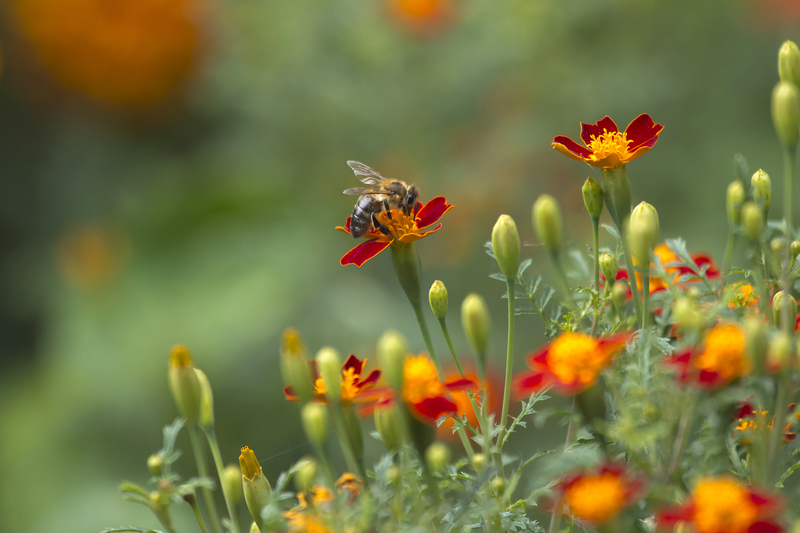Elevating Garden Aesthetics with Hedge Trimming Expertise
Posted on 06/06/2025
Elevating Garden Aesthetics with Hedge Trimming Expertise
A beautifully manicured garden can serve as a sanctuary of relaxation and an impressive display of nature's beauty. At the core of a visually appealing landscape lies the artistry of hedge trimming. Whether you own a sprawling estate or a cozy backyard, mastering hedge trimming expertise can elevate your garden aesthetics, turning simple greenery into sculpted masterpieces. In this article, we'll dive deep into the ins and outs of professional hedge trimming, discussing its benefits, techniques, and how you can transform your garden into an enviable outdoor haven.

Why Hedge Trimming Matters for Garden Aesthetics
Garden hedges are more than just natural fences. They are crucial for shaping the visual harmony of your outdoor environment. Properly trimmed hedges offer:
- Definition: Neatly shaped hedges add structure and clear lines, distinguishing pathways and garden beds.
- Symmetry: Balanced hedges create an air of sophistication, giving your garden a professionally designed look.
- Health: Expert trimming promotes robust growth, allowing fresh shoots and blooms to thrive.
- Privacy and Shelter: Well-maintained hedges provide privacy and protection from wind and noise.
- Wildlife Habitat: Trimmed, healthy hedges house birds and beneficial insects, supporting local ecology.
When executed with precision and hedge trimming skill, these lush borders serve as living artwork, framing your entire garden.
The Art and Science of Hedge Trimming
Achieving garden aesthetics with hedge trimming is both an art and a science. It's about harmonizing plants' natural growth habits with human creativity. Let's explore how professionals approach hedge management to sculpt visually striking, healthy landscapes.
Understanding Hedge Types
Every hedge species responds differently to clipping. Identifying your hedge type ensures proper trimming techniques and timing. Common varieties include:
- Evergreen Hedges - Boxwood, Yew, and Privet, prized for year-round structure.
- Deciduous Hedges - Beech, Hornbeam, and Hawthorn, displaying seasonal variation.
- Flowering Hedges - Forsythia, Lilac, and Rose, admired for blossoms and fragrance.
Knowing your plants means understanding how--and when--to shape them for maximum effect.
Essential Hedge Trimming Tools
Equipping yourself with the right tools is fundamental to hedge trimming expertise. Consider investing in:
- Hand Shears: Ideal for precise shaping and small hedges.
- Electric or Petrol Hedge Trimmers: Best for large areas and dense growth.
- Loppers & Secateurs: Useful for thick branches and detailed work.
- Protective Gear: Gloves, eyewear, and sturdy clothing for safety.
Sharp, well-maintained equipment ensures clean cuts, minimizing plant stress and disease risk.
Mastering Hedge Trimming Techniques for Stunning Garden Design
To elevate garden aesthetics with hedge trimming, technique is everything. Let's examine the professional methods that take landscape edges from ordinary to extraordinary.
1. Timing Your Trim
Understanding the rhythm of the seasons is crucial. The right time to cut varies with hedge species:
- Evergreens: Late spring or early summer allows new growth to harden, ensuring full, lush foliage throughout the year.
- Deciduous: Trim after flowering or in early spring before leaf-out. This encourages vigorous new shoots.
- Flowering Hedges: Prune right after blooming to preserve blossoms for the next season.
2. Achieving Perfect Shapes
There's true artistry in shaping hedges. The key is symmetry and proportion:
- Straight Lines: Use string lines or stakes as a guide for razor-sharp hedges along garden borders.
- Curves and Topiary: For creative shapes or topiary, mark outlines with chalk or string and trim gradually, stepping back to assess.
- Tapered Sides: Always trim so the base of the hedge is wider than the top. This ensures sunlight reaches lower branches, preventing bare spots.
3. Caring for Hedge Health
Keeping your hedges healthy is as important as aesthetics:
- Sterilize Tools: Clean blades before use to prevent disease transfer between plants.
- Remove Dead or Diseased Wood: Cut at the base to promote healthy growth and limit pest problems.
- Feed and Mulch: After trimming, nourish soil with compost to support strong shoots.
Innovative Hedge Designs for Maximum Curb Appeal
Today's landscape design offers endless possibilities for garden aesthetic enhancement through hedge trimming. Here are some modern approaches that will make your garden stand out:
- Layered Borders: Combine hedges of varying heights and textures for visual depth and interest.
- Living Sculptures: Experiment with geometric forms, spirals, or animal shapes to create unique garden features.
- Green Walls: Trim hedges tightly against fences or build freestanding vertical gardens for privacy and style.
- Labyrinth Paths: Shape low hedges into winding mazes or intricate patterns for interactive garden experiences.
Your creativity, combined with hedge trimming expertise, can transform the most basic landscape into a work of living art.
Common Mistakes in Hedge Trimming and How to Avoid Them
Even seasoned gardeners make errors. Here are frequent pitfalls that undermine garden aesthetics and how you can sidestep them:
- Cutting at the Wrong Time: Trimming during extremes of heat or cold stresses plants and reduces regrowth. Stick to recommended seasons for your hedge type.
- Uneven Shapes: Neglecting to use guides leads to wavy, misshapen hedges. Always mark lines and trim slowly, stepping back for perspective.
- Letting Hedges Get Overgrown: Skipping trims allows woody cores to develop, making rejuvenation challenging. Consistency is key!
- Improper Tool Use: Dull blades crush rather than cut, leaving ragged wounds vulnerable to disease. Sharpen and clean tools regularly.
Eco-Friendly Hedge Trimming Practices
Sustainable gardening is increasingly popular, and your approach to hedge maintenance matters. Here's how to keep your impact light:
- Encourage Wildlife: Leave a few sections untrimmed during nesting season. Native birds and insects will thank you.
- Compost Trimmings: Use clipped branches as mulch or add to a compost heap to nourish your soil naturally.
- Hand Tools Over Power: Manual shears reduce noise and emissions, offering greater control for detailed work.
- Native Plant Hedges: Select species suited to your climate, which require less water, fertilizer, and intervention.
Professional Hedge Trimming vs. DIY
While some enjoy do-it-yourself gardening, hiring a hedge trimming expert can make a significant difference in your landscape:
- Expertise: Professionals offer years of experience in plant health, pest management, and aesthetic style.
- Time and Convenience: Large or complex gardens benefit from quick, efficient service by trained hands.
- Quality Results: Achieving topiary, sharp corners, or intricate designs is easier when backed by specialist skills and equipment.
- Ongoing Care: A professional can spot problems early, suggesting treatments or management strategies.
Maintaining Year-Round Garden Elegance
The secret to year-round elegance is consistency. By establishing a regular hedge maintenance schedule, you ensure that your landscape always looks its best. Here's how:
- Plan Seasonal Trims: Mark your calendar for appropriate trimming times for each hedge type.
- Assess Plant Health: Walk your garden regularly, looking for deadwood, disease, or areas needing shaping.
- Feed, Water, and Mulch: After each trim, pamper plants with water and organic feed for rapid recovery.
- Document Progress: Take before-and-after photos. Seeing improvements keeps you motivated and helps you refine your technique year on year.

Conclusion: Unleash Your Garden's Potential with Hedge Trimming Expertise
In summary, elevating garden aesthetics with hedge trimming expertise unlocks a new world of outdoor beauty and personal satisfaction. With the right knowledge, tools, and timing, even the humblest hedge can become a stunning highlight of your landscape. Whether you sculpt them yourself or call on the services of a professional, well-trimmed hedges frame your garden, boost curb appeal, and offer a living testament to your attention to detail.
Are you ready to take your garden design to the next level? Start by mastering the art of hedge trimming--and watch your outdoor space transform into a showcase of elegance and vitality.
Frequently Asked Questions on Hedge Trimming
-
How often should I trim my hedges?
Most hedges benefit from trimming once or twice per year, but fast-growing varieties may need more frequent attention for optimal shape and health. -
Can hedge trimming be done at any time of year?
No. The best time varies by species, but avoid trimming in extreme weather or during nesting/blooming periods to protect wildlife and plant health. -
What's the best way to shape my hedges?
Mark straight lines with string, and trim slowly, checking your work often. For curves or topiary, use templates or gradual shaping, always ensuring the base is wider than the top. -
Should I hire a professional or trim my hedges myself?
If you have large, mature, or complex hedges, or if you desire intricate designs, professional help is recommended. For smaller, straightforward hedges, DIY can be rewarding and cost-effective.
Transform your garden--one hedge at a time. Embrace hedge trimming expertise and elevate your outdoor living space into a true work of art.



